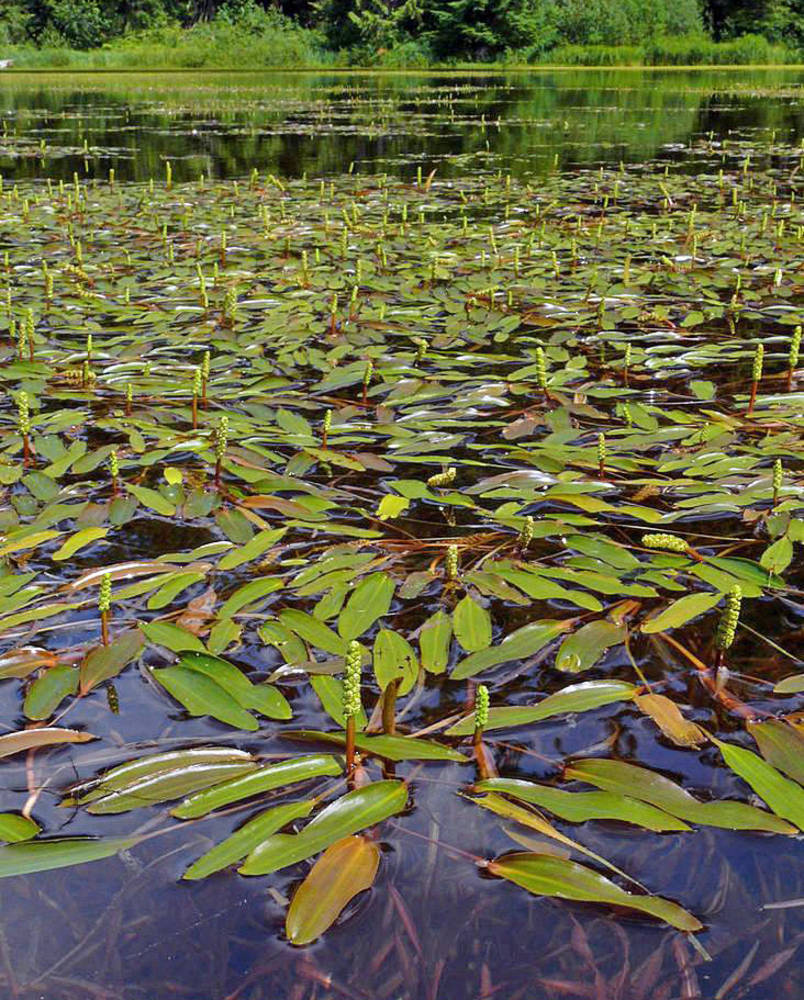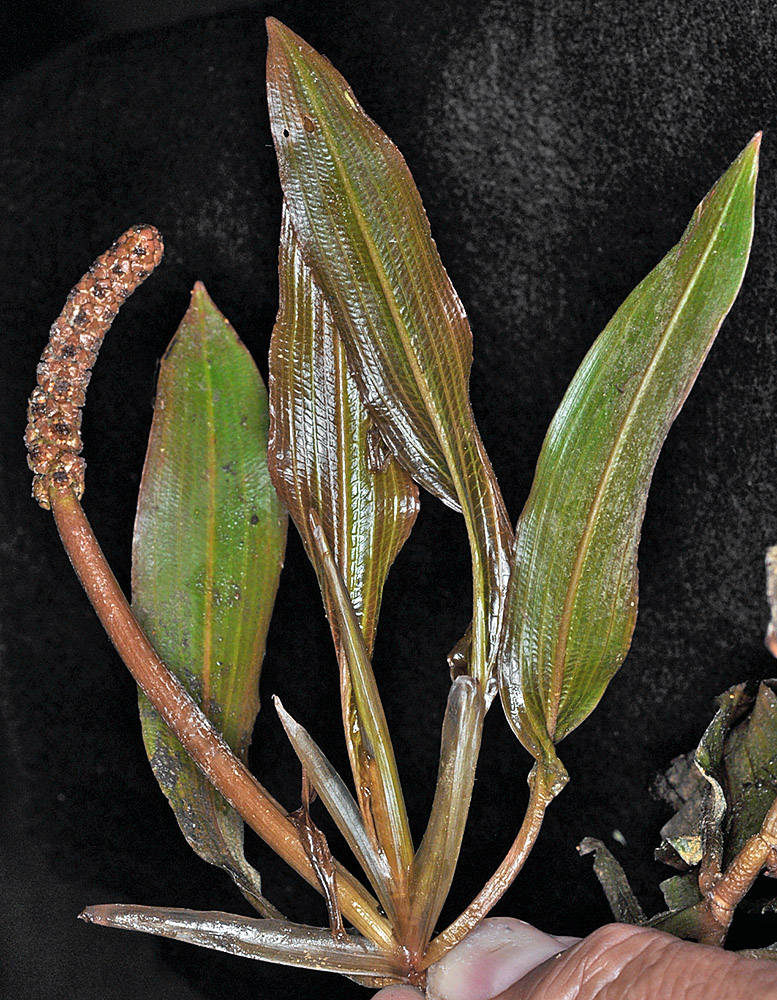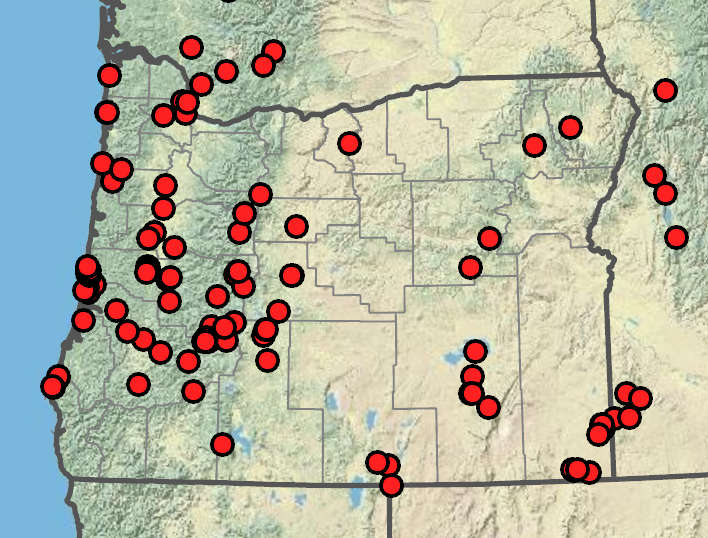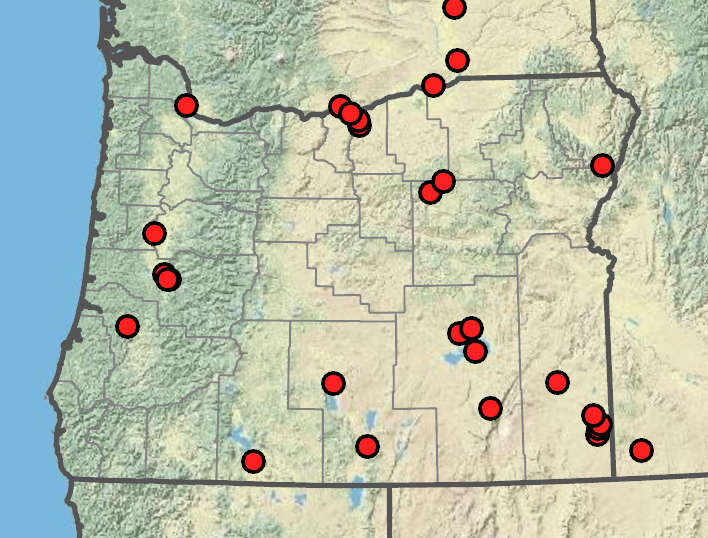Potamogeton epihydrus
Potamogeton illinoensis
ribbon-leaf pondweed, ribbon-leaved pondweed
Illinois pondweed
flattened, 10–90 cm; nodal glands absent.
terete, 28–120 cm; nodal glands absent.
submersed and floating or submersed only.
both submersed and floating or submersed only.
narrowly oblanceolate to elliptic, 20–80 × 4–20 mm;
base acute;
tip rounded or bluntly cuspidate;
veins 11–41;
petioles 20–125 mm.
elliptic to oblong-elliptic, 40–190 × 20–65 mm, light green;
base cuneate;
tip round-mucronate;
veins 13–29;
petioles 20–90 mm.
sessile, attached to stem nodes, not attached to stipules;
stipules 10–30 mm;
tip obtuse;
blades linear, 50–220 × 1–10 mm;
margins entire;
tip blunt to acute; lacunae forming a prominent band along the midvein;
veins 3–13.
petiolate or sessile, attached to stem nodes, not attached to stipules;
stipules 10–80 mm;
tip acuminate;
blades elliptic to lanceolate (linear), often falcate, 50–200 × 2–45 mm;
base acute;
margins entire, often wavy;
tip acute-mucronate; lacunae in 2–5 rows on each side of midrib;
veins 7–19;
petioles 0–40 mm.
emersed;
spikes cylindric, 8–40 mm;
peduncles axillary; erect, 15–50(160)mm.
emersed;
spikes cylindric, 25–70 mm;
peduncles terminal or axillary; erect to ascending, cylindric, 4–30 cm.
sessile; round to obovoid, flattened, dorsally and laterally keeled, 2.5–4.5 × 2–3.6 mm; greenish brown;
beaks erect, 0.5 mm.
sessile, obovoid to ovoid, laterally compressed, dorsally keeled, 2.5–3.6 × 2.1–3 mm; grayish green to olive green, laterally ridged; dorsal keel well developed;
beaks erect to slightly recurved, 0.5–0.8 mm.
Potamogeton epihydrus
Potamogeton illinoensis
Still or flowing waters of lakes, ponds and streams. 0–2000m. All ecoregions except Col. CA, ID, WA; north to AK, east to Newfoundland, southeast to FL; Europe. Native.
Potamogeton epihydrus is distinguished by submersed linear leaves with a prominent band of lacunae along the midvein. This species hybridizes with P. gramineus and P. nodosus.
Streams, lakes, ponds, and sloughs, often in alkaline waters. 50–2300m. BR, BW, Col, CR, ECas, WV. CA, WA; north to Northwest Territories, east to CT, south to South America. Native.
This species hybridizes with P. amplifolius, P. gramineus, and P. nodosus.
Nick Otting, Richard Brainerd, Barbara Wilson
Nick Otting, Richard Brainerd, Barbara Wilson
- Local floras:
BC,
CA,
OR,
WA
- Local Web sites:
CalFlora,
CalPhotos,
Flora NW,
PNW Herbaria
WildflowerSearch
iNaturalist (observations)
USDA Plants Database
- LBJ Wildflower Center
- SEINet
- Plants of the World Online
- Encyclopedia of Life
- Wikipedia
- Google Image Search
- Local floras:
BC,
CA,
OR,
WA
- Local Web sites:
CalFlora,
CalPhotos,
Flora NW,
PNW Herbaria
WildflowerSearch
iNaturalist (observations)
USDA Plants Database
- LBJ Wildflower Center
- SEINet
- Plants of the World Online
- Encyclopedia of Life
- Wikipedia
- Google Image Search





